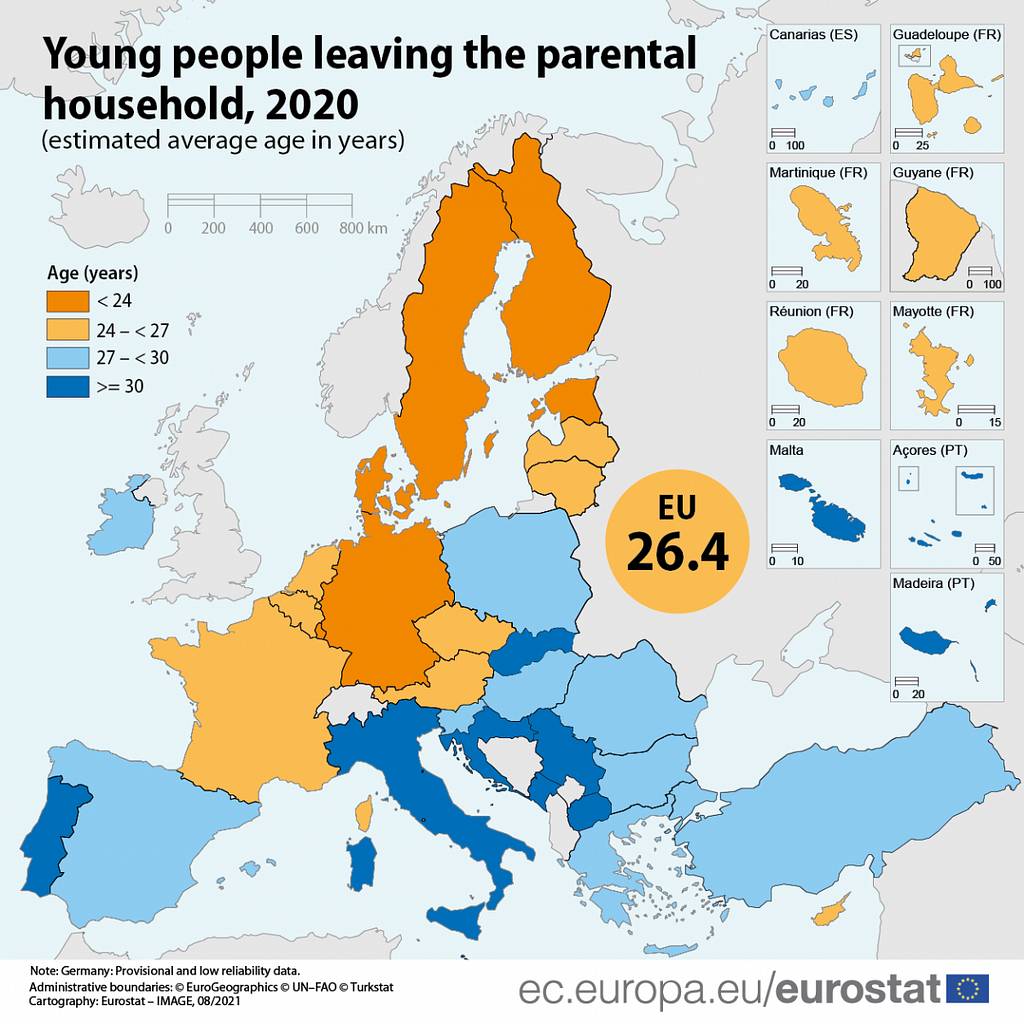The digital behaviour traits of individualism and collectivism

Once upon a time, I worked on the subtropical island of Malta. I come from a cold country, so I was logically bombarded with requests from friends and family who wanted to visit.
One day I walked into the office, and my colleagues asked me if I had a nice evening. I told them that my mum had arrived and that we ate local food.
They asked about her plans for the rest of the week. I explained that she was likely off to the beach, but I wasn’t entirely sure. When they understood she was alone, they were utterly shocked. How could a son leave his mother alone when she visits an unfamiliar country?
“Why are you here? Shouldn’t you be with your mum?! What’s wrong with you?”
This misunderstanding has cultural origins. It’s a clear example of how expectations differ in individualistic or collective countries. Individual freedom is valued in the Netherlands, whereas in most Mediterranean countries, the family bond is preferred.
You might have seen maps on social media that show the average age when kids leave their parents’ house. In the comments, Mediterranean people often accuse Nordic parents of being cruel.

Many Dutch parents expect their kids to leave the house when they are 18. Meanwhile, Northern people can find Italian or Greek folks immature for staying longer with their parents.
A comparable discussion is held about whether children should care for their parents when they become elders. Is a retirement home human?
Collectivism vs Individualism
One of the most researched social dimensions is the one that defines a culture as collectivist or individualist.
Individualism is a society in which the ties between individuals are loose: everyone is expected to look after himself or herself and his or her immediate family.
Collectivism is the opposite. People from birth onward are integrated into strong, cohesive in-groups- which throughout people’s lifetimes continue to protect them in exchange for unquestioning loyalty.
– Cultures and Organizations: Software of the Mind, Third Edition
Of course, we can’t assume everyone in individualist cultures is an individualist, whereas everyone in collectivist cultures is a collectivist.
However, cultures as a whole tend to gravitate towards one of these poles.
In individualist cultures, people usually prioritise autonomy. They place a high value on personal goals. This is considered more important than the collective goals of their in-groups. Behaviours are typically guided by independent attitudes rather than conforming to the tribe’s norms.
In contrast, people in collectivist cultures emphasise interdependence. They prefer the goals of their tribe over personal objectives. They generally conform to the established norms and social expectations.
In this article, I will explore the effects the cultural dimension of collectivism vs. individualism has on digital product design.
Online reviews
Our communication preferences are heavily dependent on our culture.
Individualist cultures typically prefer clear and to-the-point communication. Everything should be explicit.
On the other hand, collectivistic cultures often use communication that relies heavily on context. Meanings can be abstract, implied, and indirect.
These preferences have an impact on how we write product reviews. Researchers at the University of Baltimore compared reviews on the American and Chinese Amazon websites.
They analysed reviews for the exact same product but found apparent differences.
Why?
In general, collectivist cultures look at a broad context.
Something negative might be the result of environmental and indirect effects. For instance, when someone does something bad, there might be a contextual reason.
In individualist cultures, judgement is much more pointed at personal responsibility alone.
This led the researchers of the Amazon study to hypothesise that individualist customers are more likely to focus on the details and features of products.
Another hypothesis in the study states that disagreeing with the majority opinion is more normal for people from individualist cultures.
The study found empirical evidence for both these hypotheses.
First, compared with Chinese customers, American customers are more willing to provide feedback on products by expressing more opinions. Second, American customers were found to make more recommendations to others than their Chinese counterparts, which also suggests that people from the two cultures have different persuasion styles. Third, Chinese and American customers focus on different aspects of products in their reviews.



Another essential aspect of product reviews is that people from collectivist countries rely much more on the opinions of their personal relationships, rather than on anonymous online reviews.
Scientists from Saudi Arabia and Egypt found that British people are less likely to be influenced by friends to buy healthy food than Saudi people.
They conclude:
The power of recommendations from family and friends cannot be understated in collectivist cultures. Consumers place immense trust in the opinions and experiences of those within their close-knit social circles.
We can say that people from collectivist cultures supplement online reviews with opinions from their social circle.
This phenomenon can also be observed when we look at social media.
Social media
Although collectivist cultures write less on review platforms, they reach out to each other more on social media.
A Spanish team for Yahoo! Research investigated this. They monitored Twitter for 10 weeks across 30 countries for 2.34 million profiles.
In collectivist countries, “flowery language, humility, and elaborate apologies are typical. ”
Information is often acquired by contacting one’s social network. Privacy is also less important than in individualistic countries (more about this later in this article).
This led the researchers to assume that “the fraction of users who mention (engage in a conversation with) others negatively correlates with Individualism.”
They indeed found evidence that users from individualist countries mention other users far less than those from collectivist countries.


The more individualistic a country is, the more people on social media use it as a one-directional communication platform.
Privacy
There are many sociological reasons why certain countries are more individualistic than others.
One of these reasons is economic advancement. When families have more disposable income, it’s more likely each child will have their own room, potentially with their own laptop or TV, and even their own car. This naturally means more privacy.
How important privacy is to each culture was visible during the COVID pandemic.
One study investigated the differences between Canada and India in the design of their Covid app.
The designers of the Canadian app were more mindful of privacy than the designers of the Indian apps.
For example, The app adopted a decentralized privacy design, peer-to-peer Bluetooth communication, and avoided the collection of personal identifiable information such as location, name, phone number, etc.
On the other hand, the India app used both centralized and decentralized privacy design, Bluetooth, and collected personal identifiable information such as phone number for registration and location information.
The researchers explain the origins of these design choices in the country’s cultural background.
The choice of high privacy design in the Canadian app, compared to lower privacy design in the Indian app, could be akin to the value Western individualist/low-context countries such as Canada place on privacy, as Hofstede and Hall found in their work. This may partly explain the minimalist design and lack of social features in the Canadian app.
The Indian app also included social support functions. This allowed parents to monitor the potential COVID exposure of their kids. The app even had a function where you could volunteer to support others in your community. The Canadian app didn’t contain any social features.
Complexity of the UI
So far, I mainly discussed behavioural research and communication.
The preferences for the visual design of digital products might be more difficult to investigate.
An article in the Journal of Computer-Mediated Communication mapped How designers of US and South Korean websites use interaction and graphical design.
They concluded that collective cultures (South Korea) use many more visual and interactive items than individualist cultures.
There are two reasons for this.
People in a collectivistic culture feel more comfortable multitasking than do people in an individualistic culture. Similarly, in an online environment, users with polychronic time orientation might be better able to pay attention to multiple online presentations (e.g., animated graphics, video and textual information) simultaneously. They do not feel uncomfortable or overwhelmed by multiple presentations.
Conversely, users from individualist cultures exhibit a monochronic-time orientation, concentrating on one task at a time and being more sensitive to interruption by other tasks.
People from individualist cultures tend to finish one task before moving to the next. Real multitasking doesn’t exist, but quickly jumping from one task to another is considered easier in collectivist cultures.
This means that Western UIs are often focused on one call to action, whilst Asian UIs can have multiple.
Another reason for more complex UIs in Asian countries can be derived from their communication style.
Throughout time, collectivist countries have been less multicultural than individualist cultures. These countries often had a much longer shared history in which their tribe relied on communication with similar people only. They have had a longer period in which they could finesse their communication.
They can share thoughts without being too explicit. They speak words, but can expect the recipient to read between the lines to understand what is really meant.
It’s similar to relationships. I can look at my wife, whom I’ve known for a long time, without saying a word, and she then knows exactly what I mean.
In areas where individualist cultures emerged, people from different backgrounds came together. This meant that they needed to be very explicit in their communication. Otherwise, no one would understand what was being expressed. These cultures are considered low-context communicators.
In high-context cultures, like the Asian ones, being too direct is considered unsophisticated. Sometimes even rude. This is why their websites tend to use visual elements to communicate a message. The user needs to interpret what is meant without having it spelt out.
In low-context cultures, it’s much more appropriate to share the message clearly, in written form.
In online communications, textual formats are indicative of low-context communication, while the use of visual formats is indicative of high-context communication.
In this regard, textual description provides less arbitrary meaning than visual representation, which tends to be more ambiguous. As seen in the analyses, the design of U.S. home pages is, in general, less visual than the design of South Korean home pages.
Colour usage
There is certainly a link between cultures and their preferences for colours.
The study we already covered in this article, which compares the Indian and Canadian COVID app, concludes that:
in line with prior findings […] collectivist/high-context cultures prefer more colorful websites and applications than individualist/low-context cultures.
These prior findings include a study carried out by the same scientists as the covid study.
I tend to agree that collectivist cultures prefer more colourful designs. However, I struggle to link this to the cultural dimension of collectivism. To use a cliché… correlation is not causation.
For instance, many collectivist cultures have warmer climates. This naturally exposes them to more colourful landscapes. Many Canadians see a fair bit of snow each year. How does this relate to saturation preferences?
There are also strong cultural meanings behind colours. Is red the colour of love or danger?
Therefore, I would reject the initial claim that individualism and collectivism are the primary link to the culture of colour. However, this topic is worth exploring deeper in a dedicated article.

Customisation & Personalisation
People in individualist societies often grow up with the opportunities to adapt their lives towards their own preferences. They might have a private room they can decorate, their fashion choices are more experimental, and their unique opinions are accepted more.
You would therefore expect individualists to have a stronger desire to have access to apps that are customisable and contain personalised content.
We can adapt our iPhone or Android device exactly to our needs. Netflix tailers the recommendations and thumbnails based on our history, and Spotify creates playlists, specifically for us.
The customisation desire is something that has been confirmed in several studies.
“A variety of customizable options, such as enabling users to express their personal opinion, ” is desirable for individualist cultures, according to researchers at University of North Carolina.
Scientists at the University of Texas came to similar conclusions.
While the Web is said to be an ideal medium for tailored communications with a high degree of user control, horizontal individualistic Web users might still feel that these messages are targeted at a mass audience and do not reflect their personal uniqueness.
As a mirror image of this tendency, those respondents also reported possessing the highest Web skills among all the groups. People with high horizontal individualism might strive to obtain as many Web skills as possible to control what they view on the Web and modify the format and content of persuasive messages in order to satisfy their desire to be unique.
It’s worth mentioning that both these studies were done between 2002 and 2005. The digital landscape has changed since then.
Intrinsic cultural behaviours don’t change quickly, so the willingness to comply with global decisions is still higher in collectivist cultures.
However, personalisation has become so much a part of our digital life that you can’t say collectivist countries don’t expect this. I would simply say that individualist cultures now demand even more adjustability.
In practice
Let me say something very unscientific. The West can be very arrogant. Many tech companies assume that the rest of the world will adapt to their (or our) norms and conversions. I’ve been in an awful lot of workshops and meetings where people refused to be willing to understand that not everyone thinks like them.
A study that compared the attitude of Western and Asia-Pacific companies towards localisation confirmed this tendency. They investigated 115 multinationals from the US, Europe, and Asia-Pacific for 37 cultural values in seven cultural dimensions.
They specifically examined how these companies tailored their websites for the Turkish and Russian markets. Individualist indicators are typically things like privacy statements, product uniqueness, and personalisation. Communities, clubs, and newsletter features indicate high levels of collectivism.
With respect to individualism and collectivism dimensions, while the Asia-Pacific sample provided local cultural depictions, the US and the European samples did not show such depictions. This may indicate that the US and the European multinationals did not prefer localization with respect to these dimensions.
Western and Eastern multinationals have different orientation toward localization.
In other words, Asian (collectivist) companies were more likely to adapt their websites to the Turkish and Russian markets than Western companies.
Hui-Jung, from the Fu-Jen Catholic University in Taipei, examined all Fortune 500 websites that have both an English and Chinese version.
He found that the Chinese versions relied more on collectivist functions such as loyalty programs. However, newsletter subscriptions occurred significantly more frequently on English-language websites.
The study we discussed that compared Saudi and UK websites gives suggestions to make websites more suitable for collectivist cultures.
Businesses can harness this cultural inclination by implementing referral programs or incentivizing customers to share their positive experiences. By actively fostering and leveraging word-of-mouth marketing, businesses can tap into the influential power of personal recommendations, which carry significant weight and influence consumer behavior.
Conclusion
Cultural differences are not one-dimensional. Many aspects influence how we think, live together, and use digital products.
Collectivists might prefer more complex UIs, but I also wrote about how uncertainty-avoiding countries usually have more complex UIs.
This shows that we can’t rely on a single concept or study. Uncertainty-avoiding countries want more info to be able to find more reassurance. Collectivists want more elements in their UI so that the message can be communicated more subtly. They are also more at ease with multitasking.
Another aspect that affects the complexity of UIs is the type of characters a culture uses. Asian countries adapt their behaviour differently because their written language is more information-dense, and typing is often harder. This is beyond the scope of this article.
To localise your UX for individualist cultures, you might want to improve customisation, personalisation and privacy. You also should stick to one call to action.
If you work on adapting your product to collective cultures, increasing the community functions and referral programs are good choices. You also need to be mindful that communication needs to be less direct. Using graphical elements is a good option.
This individualistic person learned a lot from working with other cultures. It’s now ten years ago I left my mother alone on a strange island. I would never do that anymore.
Why are Western apps more minimalistic than Asian apps? was originally published in UX Collective on Medium, where people are continuing the conversation by highlighting and responding to this story.

Leave a Reply